Cloak and Dagger in the Jungle
- By Peter Harmsen
- 27 January, 2018
- No Comments
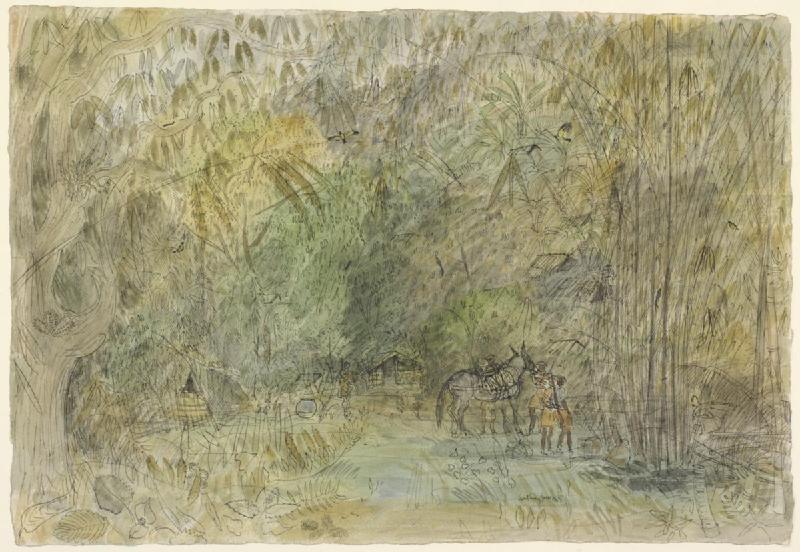
Not much has been published about the Chinese war in Burma from 1942 and 1945, and at the same time little is known about the dangerous operations carried out by special forces in that particular theater. No wonder, then, that unconventional Chinese warfare in Burma is a white spot in the existing historiography. Dr. Richard Duckett, a lecturer in history at Reading College in the United Kingdom, is doing pioneering work on this topic and recently published the monograph The Special Operations Executive (SOE) in Burma: Jungle Warfare and Intelligence Gathering in WW2. His research shows, among many other things, that the Chinese were active in the field of sabotage and intelligence gathering in Burma during the war, often amid intense rivalry with their British counterparts. We wanted to know more and asked Dr. Duckett about his work on this fascinating aspect of World War Two history.
First of all, this is of course highly dramatic history. Is there one particular incident described in your book that you would like to highlight?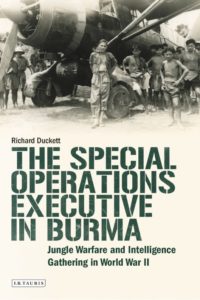
There are so many! The more I research the more I uncover incredible stories which include personnel of all races: Indian, Chinese, British, Shan, Chin, Karen, Kachin, Burmese – all played a part and there are some extraordinary acts of bravery. Visitors to your website will already know the adventures of Li Jui, for example, but I only discovered him after my book had gone to press. In relation to China, and receiving a good few pages in my book, I remain intrigued by the friction in Anglo-Chinese relations. In particular, Operation Spiers in the Kokang area of Burma has several strands making it an interesting case study. Kokang was part of British Burma, but Chiang Kai-Shek made a shrewd play for the territory in 1943 when he made the Myosa, or hereditary ruler, of Kokang an honorary colonel in the Chinese Army and gifted Yang Wen Ping a uniform, a sword, and the title Sze Ling Kuan. When this did no not have the desired effect – the Myosa remained loyal to Britain – there was an attack on the Myosa by Chinese forces in which his son was killed and the Myosa suffered a broken leg. It’s astonishing that in the middle of the war with Japan, old disagreements over where to draw a border took precedence, causing the Kokang area to become a hot-bed of intrigue in which the Special Operations Executive was unable to carry out any of its objectives. Add the American OSS and British SIS into the mix, and it becomes even more compelling.
What prompted you to write the book?
This is where I have to unleash something of a cliche! I wanted to write a book since I was about six years old, and used to ‘practice’ by taking out library books and copying them into my own notebooks. The book I remember most was on ancient Egypt. Until my teenage years I always thought I was going to write novels, but it became obvious that I would write History during senior school, and it was also during this time that I started finding out about the war in Burma from my uncle. Uncle Cliff’s stories of fighting with Slim’s XIV Army were the seed of my SOE in Burma project which came to fruition fifteen years after he passed away.
Much World War Two intelligence history could only be written decades after the fact, once the archives opened up. Does this also apply for the Burma theatre?
There are several ways to approach this question. Firstly, I think David Stafford showed that histories of SOE could be written before the SOE files became public. His book, ‘Britain and European Resistance’ was published in 1980, using documents from, amongst others, the Foreign Office (FO) and War Office (WO) files. Many of the SOE files in the HS series are duplicated in these other classifications, and in some cases they are better organised, such as in the PREM series, which means you don’t have to try and piece the jigsaw together quite as much. Many of the SOE files, however, are quite random in that you never know what you could find in them, and it is quite exciting to stumble upon something quite unexpected.
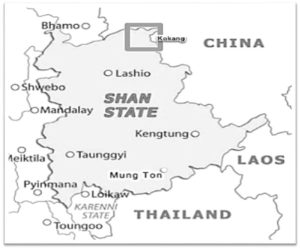 Secondly, the Far Eastern SOE records were made available to the official historian, Charles Cruickshank, and his official history of SOE in the Far East was published in 1986. This was before the files were made public in the early 1990s. I think these two examples show that the history can be written before the files are opened up, and in different circumstances. Admittedly, these historians were, as you ask in your question, revealing the history decades after the fact.
Secondly, the Far Eastern SOE records were made available to the official historian, Charles Cruickshank, and his official history of SOE in the Far East was published in 1986. This was before the files were made public in the early 1990s. I think these two examples show that the history can be written before the files are opened up, and in different circumstances. Admittedly, these historians were, as you ask in your question, revealing the history decades after the fact.
This takes me on to point three; what historians like Cruickshank and Stafford didn’t have back in the 1980s was the Freedom of Information Act, the private papers donated to the Imperial War Museum, and the internet as a powerful tool for locating veterans and their families. While you can’t criticise them for what they didn’t have, I think we are able to locate many more resources as time and technology progress. What they had more of, naturally, was live veterans to interview, but perhaps this was something that was neglected. Then, in the late 1990s, the Imperial War Museum recorded hours of interviews with SOE veterans, and they are all online just waiting for us to listen to them!
A final avenue to consider here is the importance of foreign archives. Rod Bailey showed with his ‘Target Italy’ just how much could be gleaned about the secret goings-on of SOE from a sweep of non-British repositories. These are often open before British records, and maybe even ‘in full’ as they don’t have the same secrets to hide.
In terms of Burma, I think I would have been hard pressed to write the book I have without these more recently available sources and the internet, though I must admit it is a regret that I was unable to use foreign archives to the extent I that would have liked.
What was the biggest challenge during your research?
My greatest challenge was working full time as a teacher in Further Education and completing my doctorate on a part time basis. Coming home after a day of teaching and trying to get on with my studies took discipline! With time at weekends or in school holidays so precious, those archives which did not yet embrace the digital camera made life really difficult. I found that with careful planning I could scan and photograph up to 20 files on a good day at Kew, whereas it took three trips to London and three days solid reading to finish an unpublished memoir that I was not prepared to pay over £200 to copy. The challenge was not in the research itself, I thoroughly enjoyed every moment of that, it was in the logistics of work and becoming a dad two years into my research.
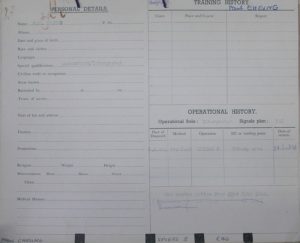
Paul Cheung’s record shows how little is often recorded about SOE personnel. Source: TNA, HS 1/29
The SOE’s activities in Asia have received much less attention than its activities in Europe. Why is that?
This is a really good question! The enduring Euro-centric focus is really quite something! In an SOE group of about 400 people worldwide, I think there are less than a handful of us who are interested in Asia. Far Eastern scholars seem few and far between, but it does seem to be slowly changing in terms of platforms for our voice to be heard. The question of why is a tricky one, but here’s my thoughts:
Perhaps part of the answer is in the simplicity of the lure of Nazism and fascination with Hitler; we all know the old cliche that ‘the swastike sells’. I think it is also significant that Britain was immediately threatened by Germany, so there could be an argument about it being ‘closer to home’ thus focusing people’s interest.
Perhaps more structurally, the content of what is available for GCSE and A Level History students does not facilitate an interest in the Far East. I used to teach a Second World War unit which covered only Europe and North Africa. Teaching a new A Level British Empire unit now, there is an opportunity to explore the war in the Far East and I have found that it is all brand new to students, even the momentous fall of Singapore is something that they have often never heard of. There is years, decades even, of this neglect of the wider Second World War in the British curriculum.
Another answer, which is a bit more of a stab in the dark in terms of tangible evidence, is the fact that Europe was not British Empire. The humiliation at the hands of the Japanese in the Far East, the end of empire including the ignominy of Suez, and then the withdrawal east of Suez after 1968 perhaps pushed the Far East and Southeast Asian history into a dark corner?
What was the level of Chinese involvement in Allied intelligence gathering in Burma? Was the Chinese intelligence service actively involved? To the extent that Chinese intelligence services were involved in Burma, how was their cooperation with their Allied counterparts?
There was covert Chinese intelligence for the KMT, and probably for the Communists too although I have not found any evidence of the latter. I recently posted the details of Paul Cheung on my website. SOE were convinced that he was a KMT spy. If SOE was running agents, then it is odds on that SIS was too, although those files remain closed so researchers are only able to catch glimpses from documents that have defeated the censorship of the archival ‘police’. My impression is that cooperation was limited, and that British suspicion of the Chinese was intense. From Putao/Fort Hertz down the eastern side of Burma through Kokang to the Southern Shan States, there was significant friction between SOE and Nationalist Chinese. The British thought that the KMT were trying to annex huge swathes of Burmese territory. Operations Spiers and Heavy were unable to really concentrate on fighting the Japanese because of the intrigue, to the extent that SOE reports discuss suspicious Chinese personnel, and SOE parties being shadowed by KMT intelligence. So I think Chinese intelligence was very actively involved, but not in a cooperative way. I think this needs much more work to uncover the extent of it, as my work has only really teased around the fringes.
In your research you have unearthed and continue to unearth fascinating details about Chinese operatives in Burma. What can you say about them individually or as a group? What motivated them? How much did they contribute to the war effort?
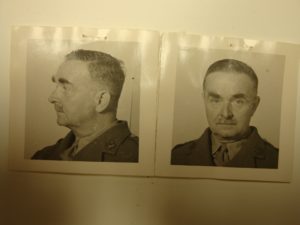
British Col. Paul Munro-Faure was in charge of the Spiers mission. Source: TNA HS 9/502/5.
This is a ‘watch this space’ question. There is more to come, I hope, from files I am currently working my way through. From what I have found so far, one motivation was to serve their KMT masters more than to serve SOE and the British, but this does not seem to apply to men like Li Jui. What motivated men like him? Perhaps, like any serving personnel from any Allied country, the motivation was that Japan was the enemy. The war against China was four years old by the time it reached Burma, meaning there was time enough for Japanese atrocities to be known and motivate resistance. For some Chinese, Burma was home, and their home had been invaded. Until there is a better sense of numbers and some idea of what operations were completed, it is impossible to say with authority what they contributed to the war effort. Uncovering this information is proving tricky because so many files were destroyed, and in what survives there is very little about any non-British races. I am working on trying to get the voices of these ‘Forgotten Allies’ out there through posts on my blog, and hopefully our understanding of the contribution of Allies like the Chinese and the Burmese races can be deepened.
During the war years, China and Burma were often seen as interlinked, as reflected in e.g. the China-Burma-India theatre designation. In post-war historiography, on the other hand, they have been treated mostly as separate theatres. Which approach do you think makes more sense?
Also reflected in Southeast Asia Command as well, but earlier in the war it had been a different matter. The area is so huge with so much going on I can understand why some work keeps them separate, and I can see how it can makes sense to follow this approach for some projects. Often it is a case of space and time, as well as personal interest. If you think about the different fronts in China, the India and Burma part were a small part of the Chinese effort. There is no doubt of course that they are interlinked strategically, even accepting the divergent strategies of all involved. I suppose the ‘fence-sitting’ answer is that it depends on the objectives of the writer, but I am inclined to the interlinked rather than separate theatre treatment. The whole understanding, the bigger picture, should be where the ‘zoom in’ comes from.



 Copyright © 2024
Copyright © 2024
Leave a Reply